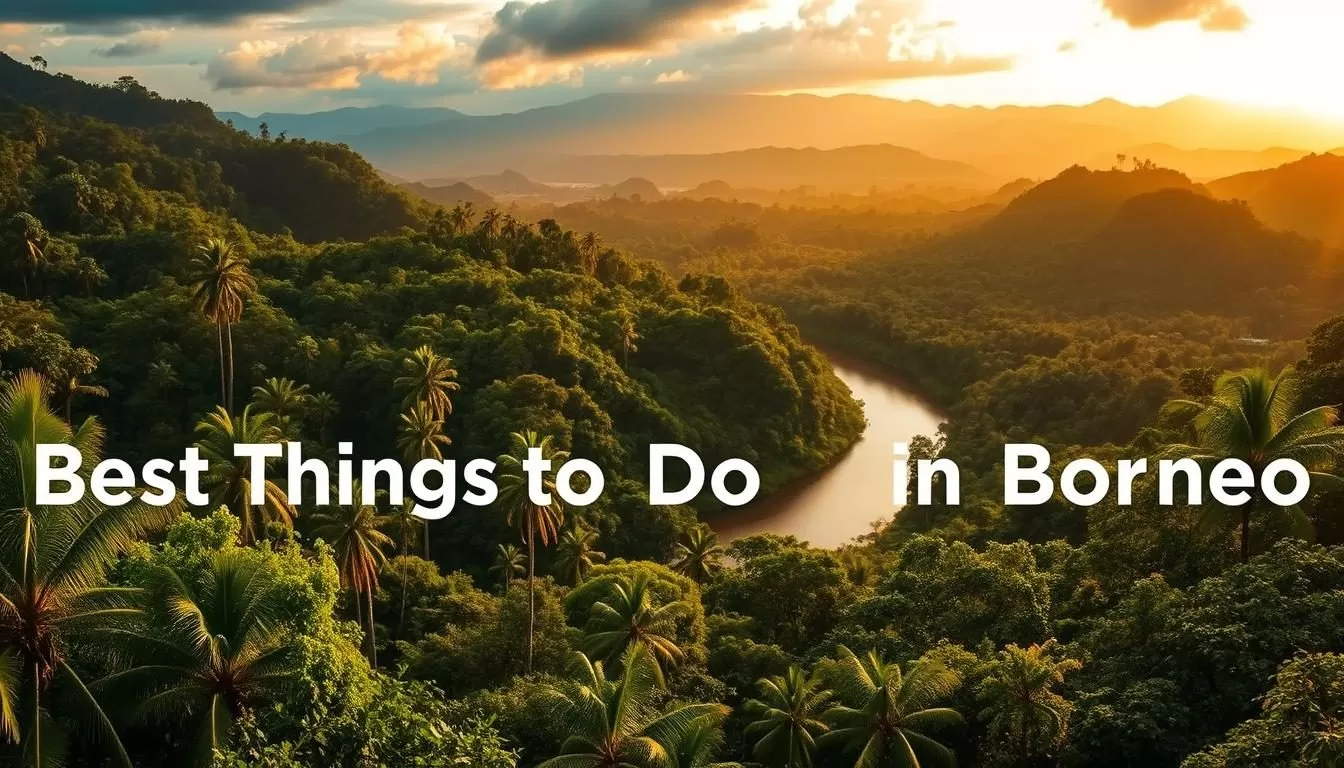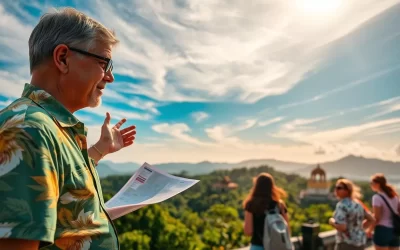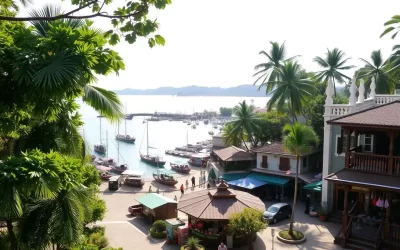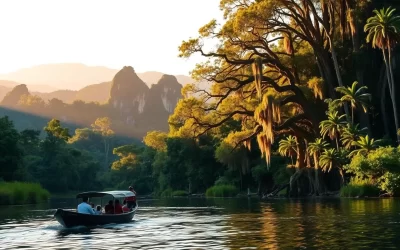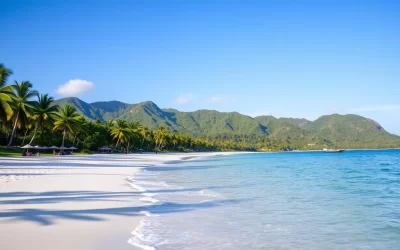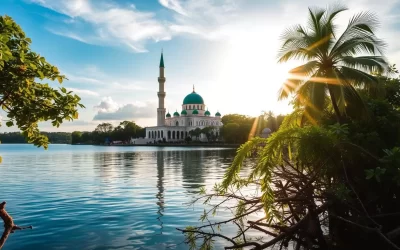Imagine stepping into a world of mystery and adventure, where lush rainforests stretch as far as the eye can see, and the wildlife is as diverse as it is fascinating. Welcome to Borneo, a destination that promises to leave you in awe of nature’s splendor.
You’re about to embark on a journey to explore the unparalleled wildlife experiences and cultural encounters that this incredible island has to offer. From the famous orangutans to the towering mountains and winding rivers teeming with unique wildlife, Borneo is a traveler’s paradise.
This comprehensive guide will walk you through the top experiences in Malaysian Borneo, focusing on the states of Sabah and Sarawak, which offer the most accessible and diverse travel experiences.
Discovering the Wild Heart of Southeast Asia
With its lush rainforests, majestic mountains, and vibrant cultures, Borneo is an island that promises an unforgettable travel experience. As you explore this vast and diverse land, you’ll encounter the rich heritage of the people who call it home.
Borneo is shared by three nations: Malaysia, Indonesia, and Brunei. This division creates a unique blend of cultures and travel experiences across the island. The Malaysian part, which includes the states of Sabah and Sarawak, is the most accessible and developed for trip planning.
What Makes Borneo Special
The place is known for its biodiversity, with many species found nowhere else on Earth. The island’s rainforests are home to orangutans, pygmy elephants, and proboscis monkeys, making it a paradise for wildlife enthusiasts.
The Three Nations of Borneo Island
The division of Borneo among three nations offers a variety of experiences.
| Nation | Region | Experience |
|---|---|---|
| Malaysia | Sabah and Sarawak | Developed tourism infrastructure |
| Indonesia | Kalimantan | Off-the-beaten-path adventures |
| Brunei | Small sultanate | Cultural experiences with grand mosques and royal palaces |
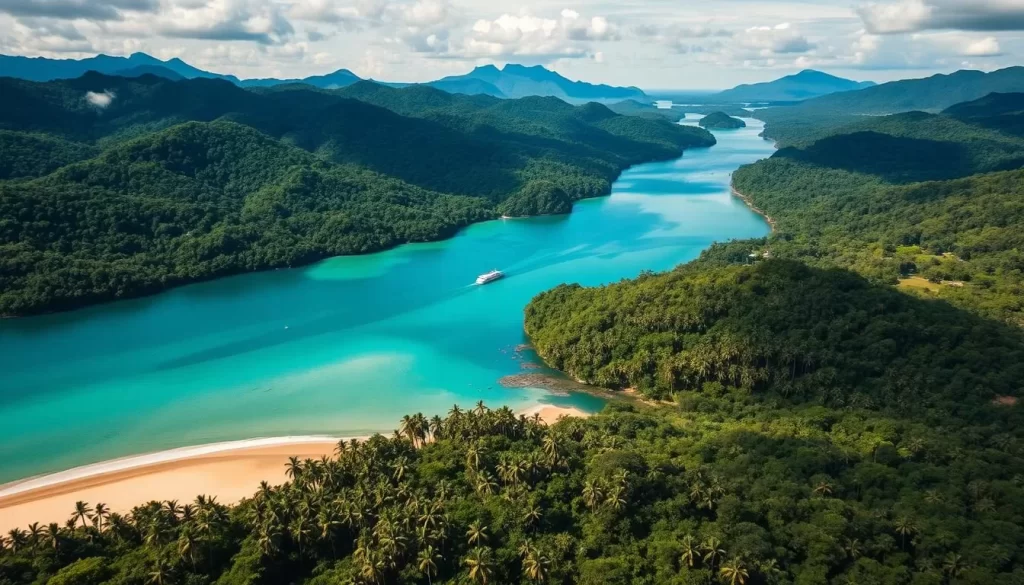
Each region has its own distinct cultural identity, with various indigenous groups maintaining their traditional ways of life. This diversity gives you the opportunity to experience authentic cultural encounters during your trip.
When to Visit Borneo: Timing Your Adventure
The adventure of a lifetime in Borneo starts with deciding when to go. Borneo’s climate significantly influences the quality of your travel experience.
Dry Season: April to September
The dry season, from April to September, is considered the best time to visit Borneo. During these months, the weather is generally dry and sunny, making it ideal for outdoor activities and wildlife spotting. With comfortable conditions, you’re likely to have a more enjoyable trip.
Rainy Season: October to March
For travelers on a tight budget, the rainy season (October to March) might be an attractive option. Although it sees an increase in rain, the showers are often short and heavy, leaving plenty of days for exploration. The lush vegetation and full waterfalls during this period are a bonus for photography enthusiasts.
Here’s a summary of what to expect during the dry and rainy seasons:
| Season | Weather | Activities | Cost |
|---|---|---|---|
| Dry Season (April – September) | Sunny, dry | Outdoor activities, wildlife spotting | Higher |
| Rainy Season (October – March) | Rain showers, lush vegetation | Photography, budget travel | Lower |
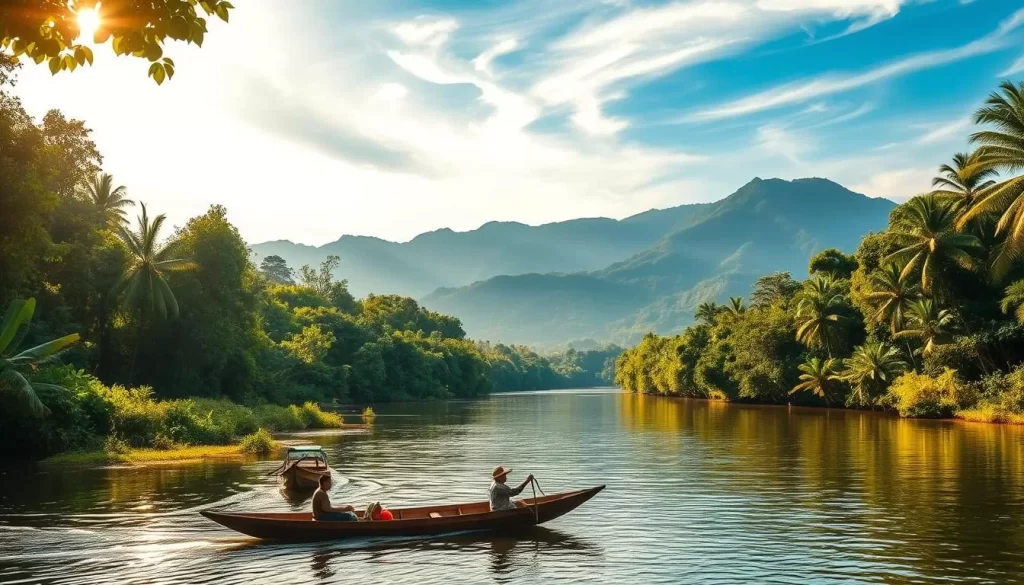
Ultimately, the best time to visit Borneo depends on your priorities. Whether you’re looking for dry weather or a more budget-friendly option, Borneo has something to offer at any time of the year.
Meet the Orangutans at Sepilok Rehabilitation Centre
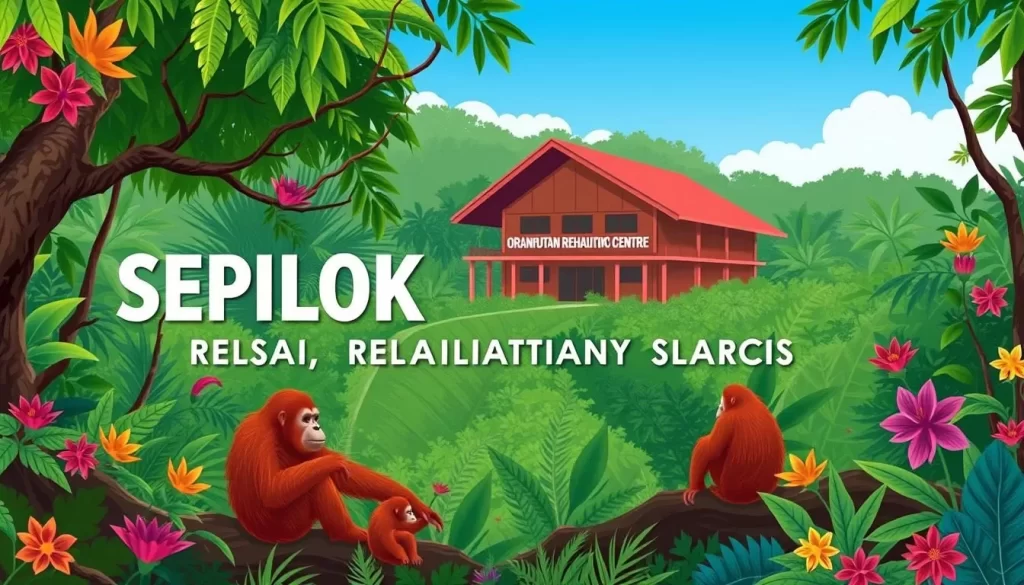
Borneo’s Sepilok Orangutan Rehabilitation Centre is dedicated to the conservation of orangutans and offers visitors an unforgettable encounter with these majestic animals. Located in Sabah, Malaysian Borneo, the centre is a sanctuary for orphaned orangutans, providing a safe haven for them to grow and thrive.
Conservation Efforts and Feeding Times
The Sepilok Orangutan Rehabilitation Centre is renowned for its conservation efforts, including the rehabilitation of orphaned orangutans with the goal of releasing them back into the wild. Visitors can witness these efforts firsthand by attending the feeding sessions, which are a highlight of any visit. The centre’s conservation work is supported by entrance fees and donations, ensuring the continued care and protection of these incredible creatures.
During the feeding times, you’ll have the opportunity to see the orangutans up close as they are fed by the centre’s experienced staff. It’s a truly unforgettable experience, offering a glimpse into the lives of these fascinating animals.
Tips for Responsible Wildlife Viewing
When visiting the Sepilok Orangutan Rehabilitation Centre, it’s essential to practice responsible wildlife viewing to ensure both your safety and the well-being of the orangutans. Here are some key tips to keep in mind:
- You should maintain a respectful distance from the orangutans at all times, as these great apes can easily contract human diseases that could be fatal to them.
- The centre prohibits touching, feeding, or interacting directly with the orangutans – these rules exist to protect both you and the animals, so follow your guide’s instructions carefully.
- You’ll need to pay an entrance fee of RM30 for adults (approximately $7 USD), plus an additional RM10 camera fee if you wish to take photos, with all proceeds supporting the centre’s conservation work.
- Consider visiting both the orangutan centre and the adjacent Bornean Sun Bear Conservation Centre on the same day, as they’re located within walking distance of each other and offer complementary wildlife experiences.
- For the best wildlife viewing experience, arrive early in the morning before the crowds, wear neutral-colored clothing, speak quietly, and bring binoculars and a camera with a zoom lens to observe the orangutans without disturbing them.
By following these guidelines and being mindful of your impact, you can contribute to the conservation of orangutans and enjoy a meaningful visit to the Sepilok Orangutan Rehabilitation Centre.
Cruise the Kinabatangan River for Wildlife Encounters
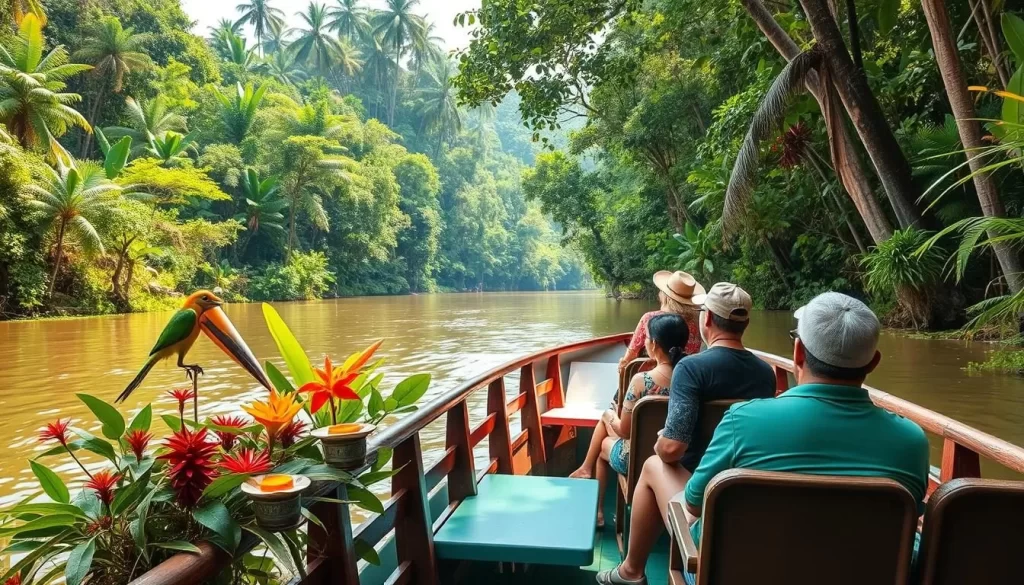
Embark on a journey along the Kinabatangan River, where the lush jungle and its inhabitants await your discovery. The Kinabatangan River is renowned for its rich biodiversity, making it an ideal location for a wildlife cruise. You can take a day tour here from Sandakan, but it’s far better to spend a few days and nights here, immersing yourself in the peaceful atmosphere and combining your stay with night nature walks and more wildlife spotting.
Spotting Pygmy Elephants and Proboscis Monkeys
The Kinabatangan River is home to a variety of wildlife, including the endangered Pygmy Elephants and the iconic Proboscis Monkeys. As you cruise along the river on a boat safari, you’ll have the opportunity to spot these incredible creatures in their natural habitat. The river’s unique ecosystem supports a wide range of flora and fauna, making every tour a thrilling experience.
Best Lodges and Tour Options
You’ll find a range of accommodation options along the Kinabatangan River, from basic jungle lodges to more luxurious eco-resorts. While day trips from Sandakan are possible, staying for at least 2-3 days at a riverside lodge allows for multiple boat safaris at different times of the day, maximizing your wildlife viewing opportunities. Most lodges offer comprehensive packages that include accommodation, meals, river cruises, jungle walks, and night safaris.
Climb Mount Kinabalu: Southeast Asia’s Highest Peak
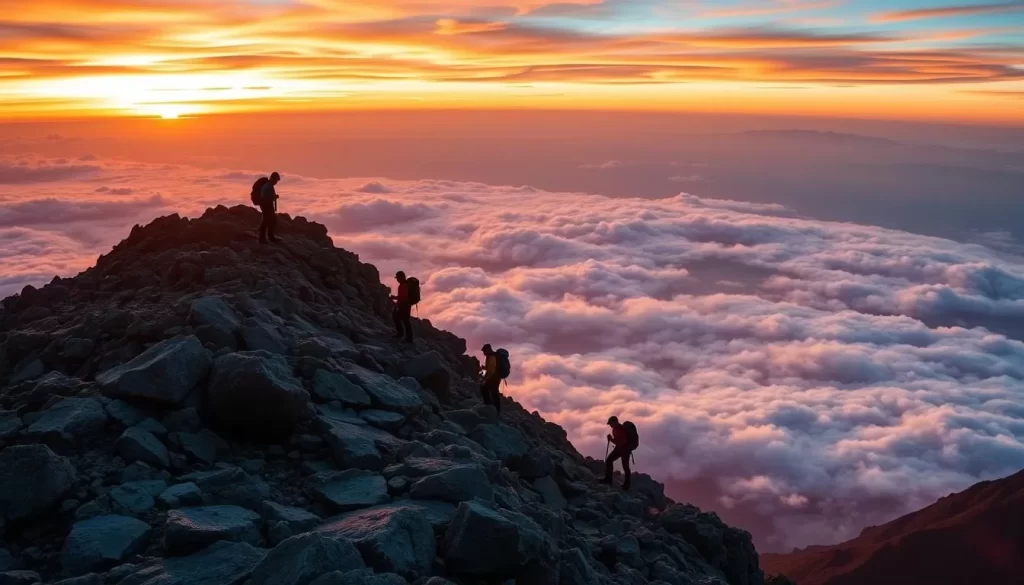
The climb up Mount Kinabalu is more than just a hike; it’s an adventure that takes you through diverse ecosystems and to the rooftop of Southeast Asia. This two-day journey is a test of endurance, but the sense of achievement and the breathtaking views make it an unforgettable experience.
When planning your climb, consider the time of year. The dry season, from March to August, is considered the best time to attempt the climb due to more favorable weather conditions.
Preparing for the Climb
Preparation is key to a successful Mount Kinabalu climb. It’s highly recommended to join a guide-led tour to ensure safety and to gain insights into the mountain’s unique ecology. The climb begins at Timpohon Gate (1,866m), where you’ll embark on a challenging 6km treks through montane and cloud forests to reach the overnight rest house.
The first day‘s climb typically takes 4-6 hours, during which you’ll traverse through distinct ecological zones, appreciating the rich nature and biodiversity of the area with the help of your guide.
What to Expect on the Summit Trail
On the second day, you’ll wake up around 2:00 AM to begin the summit attempt. Climbing in the dark with headlamps, you’ll navigate steep granite faces equipped with ropes to reach Low’s Peak (4,095m) for a spectacular sunrise.
The final section of the summit trail involves traversing an exposed granite plateau, where you may experience dramatic temperature drops and strong winds. Proper layered clothing is essential for this part of the climb.
Explore Borneo Island, Malaysia: Best Things to Do – Top Picks for Nature Lovers
Borneo, the third-largest island in the world, is a treasure trove of natural wonders, making it a must-visit for nature lovers. The island is home to diverse ecosystems, including rainforests, mountains, and caves, each hosting a wide range of flora and fauna.
Danum Valley Conservation Area
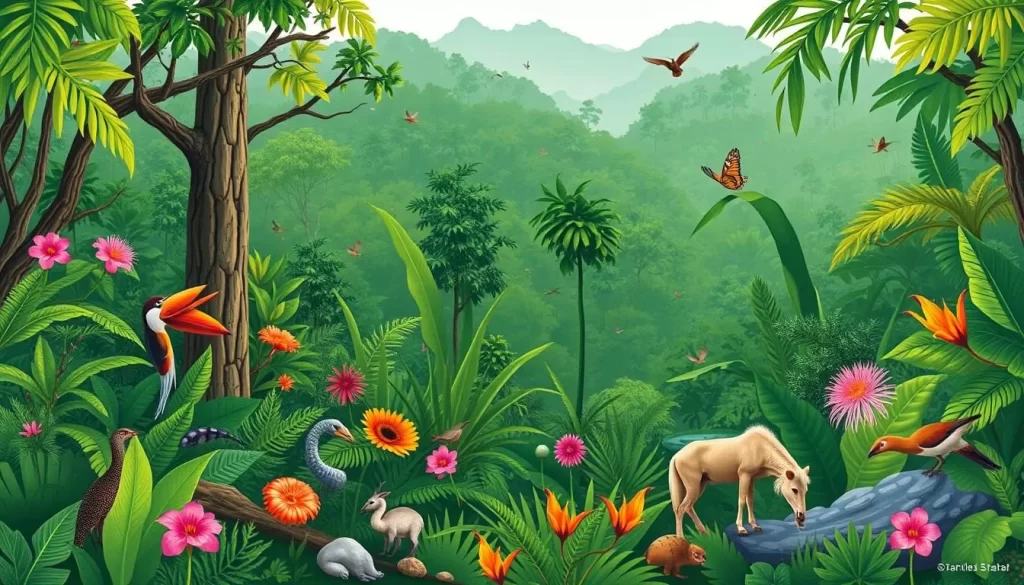
The Danum Valley Conservation Area is a pristine rainforest reserve that offers a unique opportunity to observe wildlife in their natural habitat. The area is known for its ancient rainforest, with some trees being over 1,000 years old.
Visitors can enjoy guided tours to spot orangutans, proboscis monkeys, and various bird species. The conservation area is also involved in research and conservation efforts to protect the rainforest and its inhabitants.
Mulu Caves and National Park

Gunung Mulu National Park is a UNESCO World Heritage Site renowned for its exceptional limestone cave systems and ancient rainforest. The park features the world’s largest cave passage, Deer Cave, and Sarawak Chamber, one of the world’s largest underground chambers.
Visitors can explore the park’s four show caves: Wind, Clearwater, Deer, and Lang Caves, via wooden walkways and illuminated pathways. The park is also known for the spectacular sight of millions of bats emerging from Deer Cave at dusk.
The park’s unique geological formations and diverse wildlife make it a fascinating destination for nature lovers. However, due to its remote location, advance planning is essential, including booking flights and accommodations in advance.
Experience Borneo’s Indigenous Cultures
Immerse yourself in the vibrant cultures of Borneo’s indigenous communities.
Longhouse Stays in Sarawak
Staying at a longhouse in Sarawak is a unique opportunity to experience the traditional life of the indigenous people.
You can participate in daily activities, such as fishing and farming, and learn about the local customs and traditions.
Sarawak Cultural Village
The Sarawak Cultural Village is a living museum that showcases the diverse indigenous cultures of Borneo.
You’ll discover seven authentic replicas of traditional dwellings, including Iban and Bidayuh longhouses, Penan huts, and Melanau tall houses.
Take a self-guided tour and explore at your own pace, watching demonstrations of traditional skills like weaving, bamboo carving, and blowpipe shooting.
The village also features twice-daily cultural performances in the village theater, featuring traditional music, dances, and ceremonies from Sarawak’s major ethnic groups.
Island and Beach Escapes in Borneo
Borneo’s offshore islands offer a serene and idyllic beach experience. You can unwind on white sandy beaches, snorkel in crystal-clear waters, or simply enjoy the tropical surroundings. The islands are perfect for beach lovers, families, and couples seeking a romantic getaway.
Turtle Islands Marine Park
The Turtle Islands Marine Park is a haven for those seeking a tranquil island experience. You can visit the park to see the turtle conservation efforts and enjoy the beautiful beaches. The park is known for its pristine beaches and crystal-clear waters, making it ideal for snorkeling and diving.
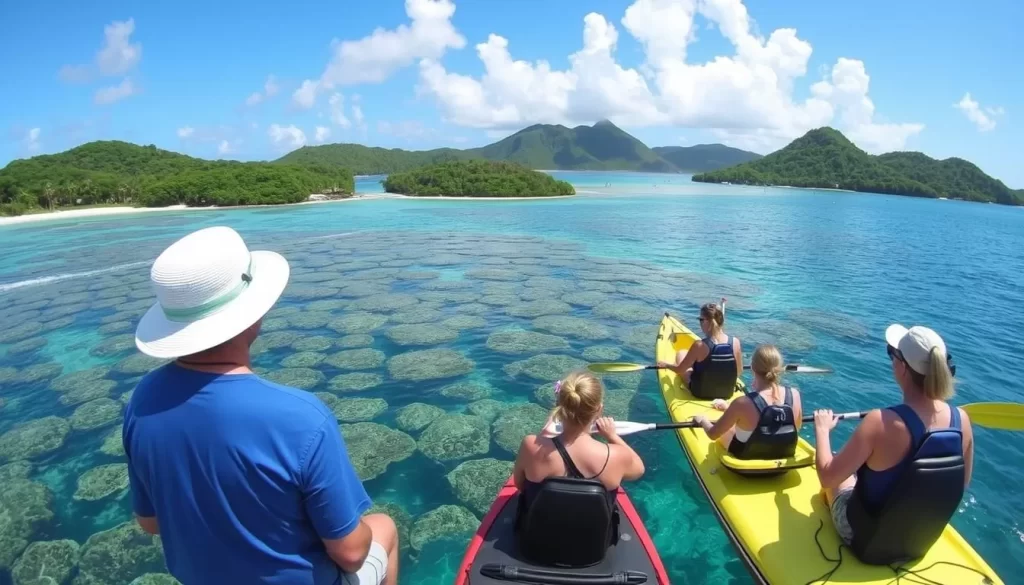
Tunku Abdul Rahman Marine Park
Tunku Abdul Rahman Marine Park, located just 20 minutes by boat from Kota Kinabalu, is a cluster of five islands with pristine beaches, crystal-clear waters, and vibrant coral reefs. You can enjoy island-hopping tours, snorkeling, parasailing, or simply relaxing on the white sand beaches. The park’s islands—Gaya, Manukan, Sapi, Mamutik, and Sulug—each offer different experiences, from developed resorts to secluded beaches.
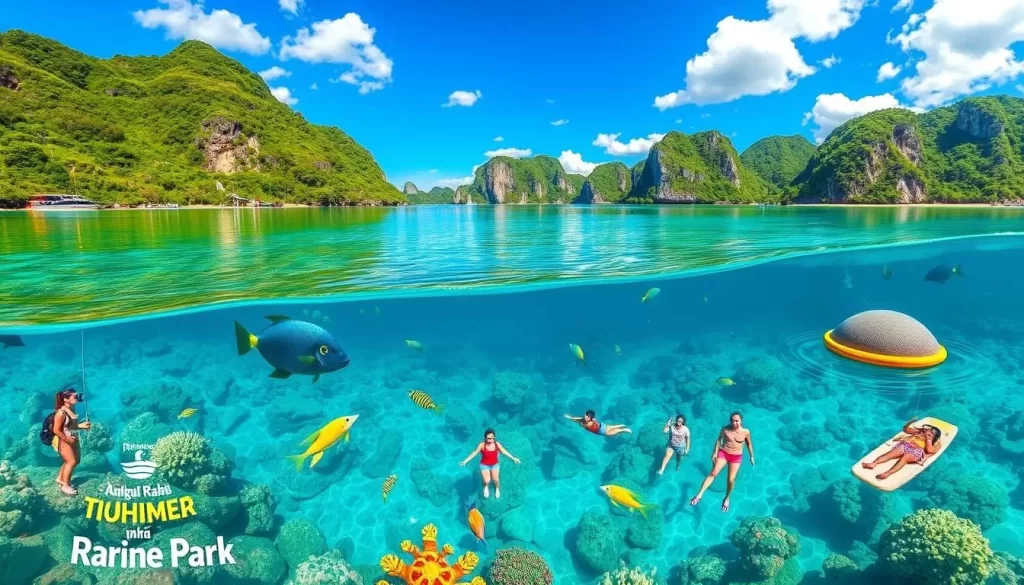
To make the most of your visit, consider staying overnight on one of the islands for a more serene experience. You can book island hopping packages through a tour operator, which are readily available. Visiting during the week is also recommended to avoid the weekend crowds.
Wildlife Sanctuaries and National Parks
Borneo’s diverse wildlife is protected within its many sanctuaries and national parks, making it a paradise for wildlife lovers. As you visit Borneo, you’ll have the opportunity to explore some of the most unique and fascinating ecosystems in Southeast Asia.
Bako National Park: Home of the Proboscis Monkey
Bako National Park is one of the most accessible national parks in Sarawak, known for being a place where you can see the endemic proboscis monkey in its natural habitat. To plan your trip, consider a Bako National Park day trip to experience the park’s diverse wildlife and ecosystems.
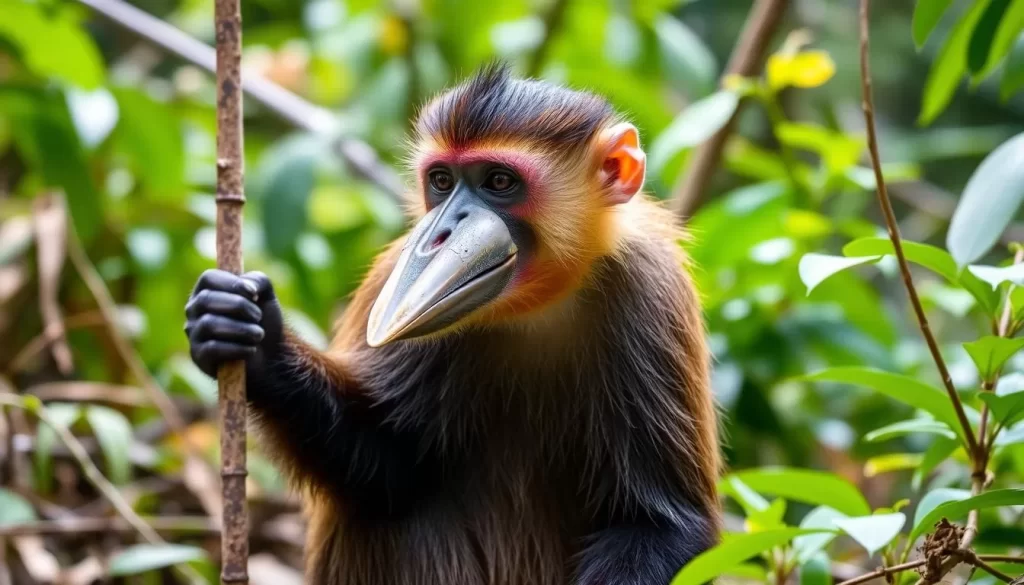
Gomantong Caves: The Bird’s Nest Harvesting Site
The Gomantong Caves are a significant site in Sabah, known for their centuries-old bird’s nest harvesting tradition. When you visit the caves, you’ll step into a fascinating world teeming with life, including thousands of swiftlets and millions of bats. The caves are also home to unique species such as giant cockroaches and cave racer snakes.
The Gomantong Caves system consists of two main chambers: Simud Hitam (Black Cave) and Simud Putih (White Cave). The Black Cave is easily accessible via a boardwalk, making it suitable for families. For a more adventurous experience, consider a Gomantong Caves tour that explores the depths of these limestone caves.
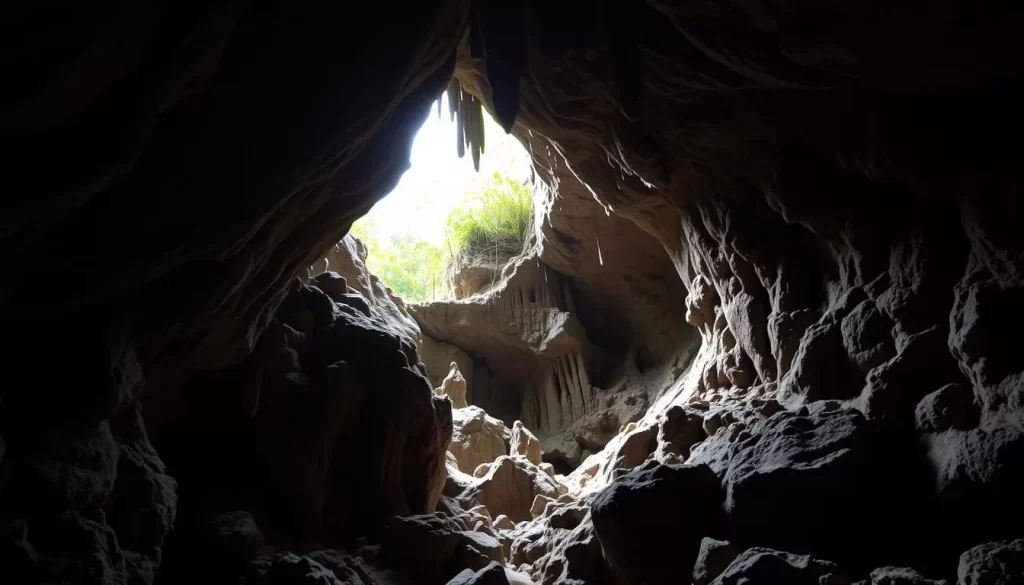
As you explore these protected areas, you’ll not only witness the rich biodiversity of Borneo but also learn about the conservation efforts in place to protect it. Whether you’re spotting turtles nesting on the beaches or observing the majestic proboscis monkeys, your visit to Borneo’s wildlife sanctuaries and national parks will be an unforgettable experience.
Planning Your Borneo Adventure: Practical Tips
With so much to offer, from orangutan sanctuaries to pristine beaches, planning your Borneo adventure is key to a memorable journey.
When planning your trip, consider that Borneo is a large island that requires time to explore. Ideally, you should plan to spend at least10-14 daysin Borneo to experience the highlights without rushing. However, if time is limited, a7-day tripcan work if you focus on one region, such as Sabah or Sarawak, and prioritize your must-see activities like visiting orangutan sanctuaries or spotting pygmy elephants.
Budgeting is another crucial aspect; whilebudget travel is possiblefrom $50/day, mid-range experiences ($100-200/day) often offer better wildlife viewing opportunities. Many top sites, such as Danum Valley, require organized tours, which should be factored into your budget.
Yourpacking listshould include essentials like lightweight clothing, good hiking shoes, rain gear, and insect repellent. International flights typically arrive in Kota Kinabalu or Kuching, and consider anopen-jaw ticketto maximize your time.
Borneo’slocal cuisineis a highlight, with dishes like laksa and kolo mee. Consider joining asmall group tourfor your first visit to Borneo, as it offers an efficient way to see multiple sites with expert guides.
When planning your itinerary, balancewildlife experiences,cultural activities, andrelaxation timeto avoid burnout. Remember, Borneo operates on “jungle time,” so be prepared for flexibility in your plans.
By considering these practical tips, you’ll be well on your way to a well-planned and memorable Borneo adventure.
